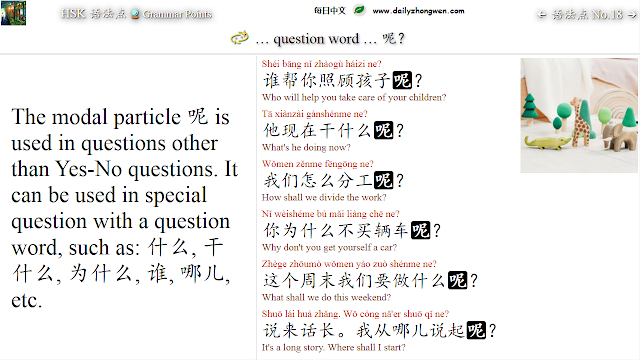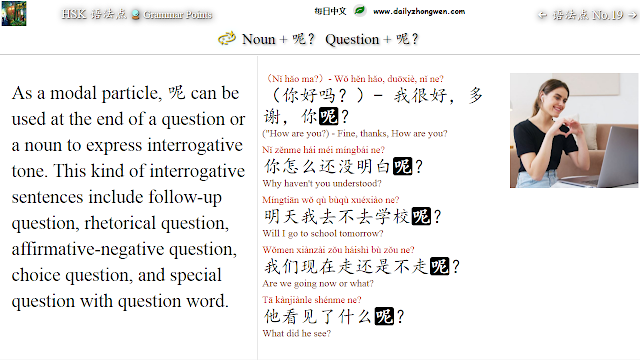Today, let's learn HSK grammar points. Chinese grammar mainly relies on word order and function words. In this video, I am going to introduce 3 function words: 吗,呢,吧. They are modal particles used at the end of sentences to indicate mood or attitude. These 3 modal particles are always pronounced in neutral tone.






















